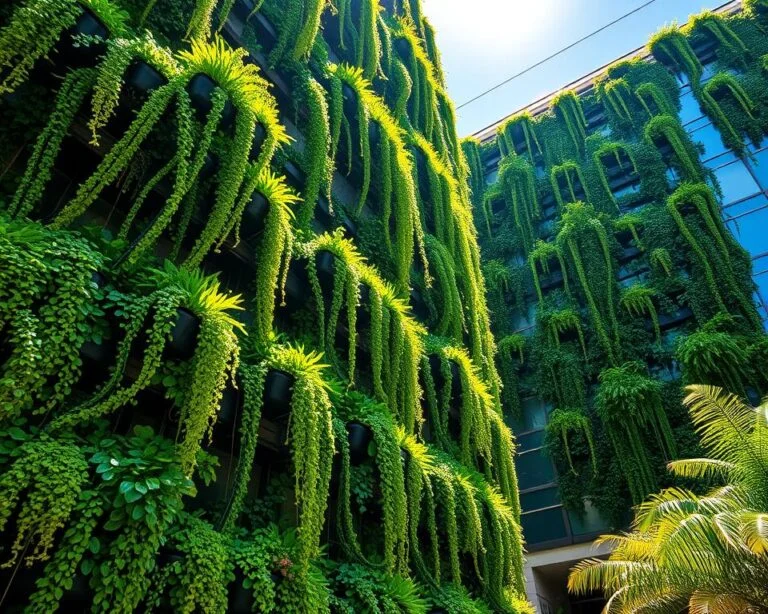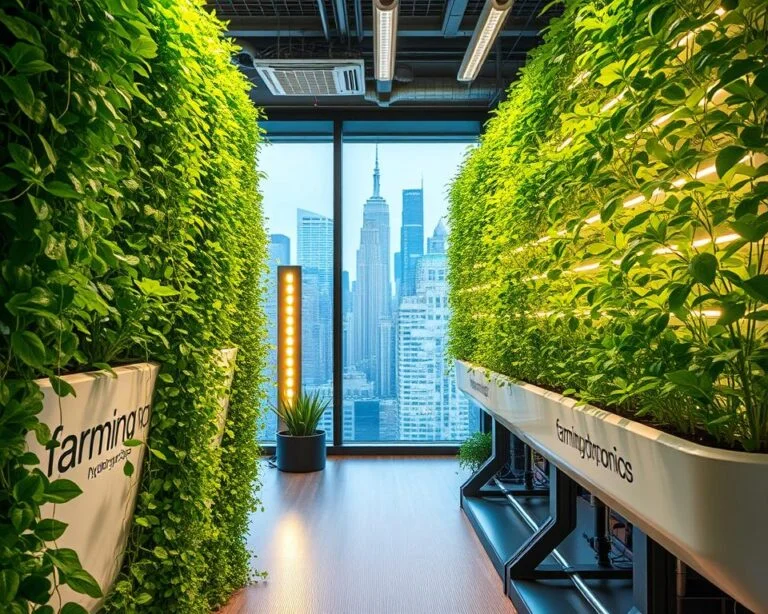Edible Walls: Growing Food with Vertical Gardens
Imagine turning that empty wall in your kitchen or backyard into a lively garden. It’s not just a trend; it’s a new way to grow food in cities. Vertical gardening makes small spaces into green, edible areas.
Edible walls are amazing because they make the most of your space. They can grow more food than regular gardens. This means you can grow food even if you live in a small place.
People in cities and garden lovers are finding vertical gardens useful. They use walls, fences, and balcony railings to grow food. Now, you don’t need a big farm to grow your own food.
Key Takeaways
- Vertical-gardens maximize limited space for food production
- Reduces plant disease through better air circulation
- Ideal for urban environments with space constraints
- Provides fresh, organic produce at home
- Transforms unused vertical spaces into productive gardens
Understanding Vertical Food Gardens: A Space-Saving Solution
Urban farming has changed how we grow food in tight spots. Vertical gardening turns walls and small spots into lush gardens. It lets you grow lots of food without needing a big area.
Edible vertical-gardens are smart systems for growing food on walls. They turn unused spots into gardens. This makes growing food easy for anyone, from city apartment dwellers to small patio owners.
What Defines an Edible Vertical Garden
An edible vertical garden grows plants up instead of out. It has a few key features:
- Uses walls, trellises, or special structures
- Supports plants with shallow roots
- Uses space well
- Helps grow food in cities
Rising Popularity of Vertical Gardens
Vertical gardening is becoming more popular for good reasons. DIY fans love the creativity it offers. It solves many problems:
- It saves space in cities
- It uses less water
- It looks great
- It grows more food in small areas
Types of Vertical Growing Systems
There are many ways to do vertical gardening, for every space and taste:
- Wall-mounted planters
- Hanging pot systems
- Modular growing units
- Trellis-based gardens
- Window box setups
“Vertical gardening turns urban spaces into green, productive environments” – Urban Farming Experts
By using vertical gardening, you can make your space beautiful and productive. It brings fresh food and greenery into your home, no matter how small it is.
Benefits of Growing Food Vertically
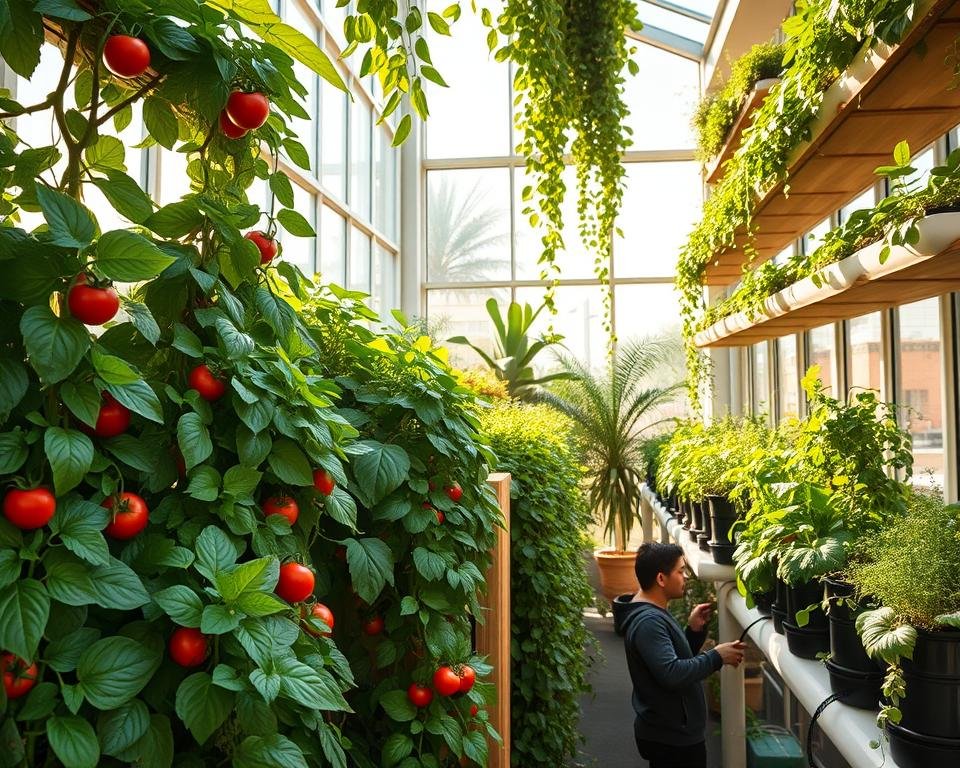
Edible landscaping changes how we grow food in cities. Vertical gardens are a smart choice for modern gardeners. They let you grow food in a way that’s both productive and beautiful.
The benefits of vertical gardening are impressive. Here are some key advantages:
- Increased crop yields up to 50% compared to traditional methods
- Space savings of up to 80% in urban agriculture settings
- Reduced soil-borne diseases by approximately 30%
- Significant pest reduction of around 25%
Vertical gardening combines sustainable architecture with urban agriculture. Even a small balcony or rooftop can become a food production area. The design improves air flow, helping plants stay healthy.
“Vertical gardens are not just about growing food—they’re about reimagining urban spaces and reconnecting with our food sources.”
Vertical gardens also add beauty to your space. They turn plain walls into living art, making your area look up to 40% better. They work well indoors or outdoors, offering both looks and fresh food.
Your vertical garden is a key part of sustainable living. It uses space wisely and saves water, helping the planet.
Best Plants for Edible Walls
Turn your vertical space into a green food factory with the right plants. Choose wisely to get both beauty and food from your edible wall.
When planning your edible wall, pick plants that fit well in small spaces. Here are some top picks:
Leafy Greens and Herbs
Quick-growing plants are great for vertical gardens. Here are some good choices:
- Swiss chard for colorful leaves
- Kale (Red Russian variety thrives in zones 3-10)
- Herbs like rosemary, thyme, and sage
- Salad greens for looks and taste
Fruiting Plants
Choose small fruiting plants for your vertical garden:
- Alpine strawberries for neat growth
- Cherry tomatoes for endless harvests
- Pepper varieties like Tricolor variegata chili peppers
- Dwarf fruit trees for wall training
Climbing Vegetables
Vertical gardens love climbing plants that grow up:
- Pole beans for fast coverage
- Peas for simultaneous production
- Cucumbers on trellises
- Kiwi vines for zones 7-9
Your vertical garden can be a lively food source and a beautiful sight. Pick plants that match your climate and sunlight for a lush edible wall.
Essential Design Elements and Structure
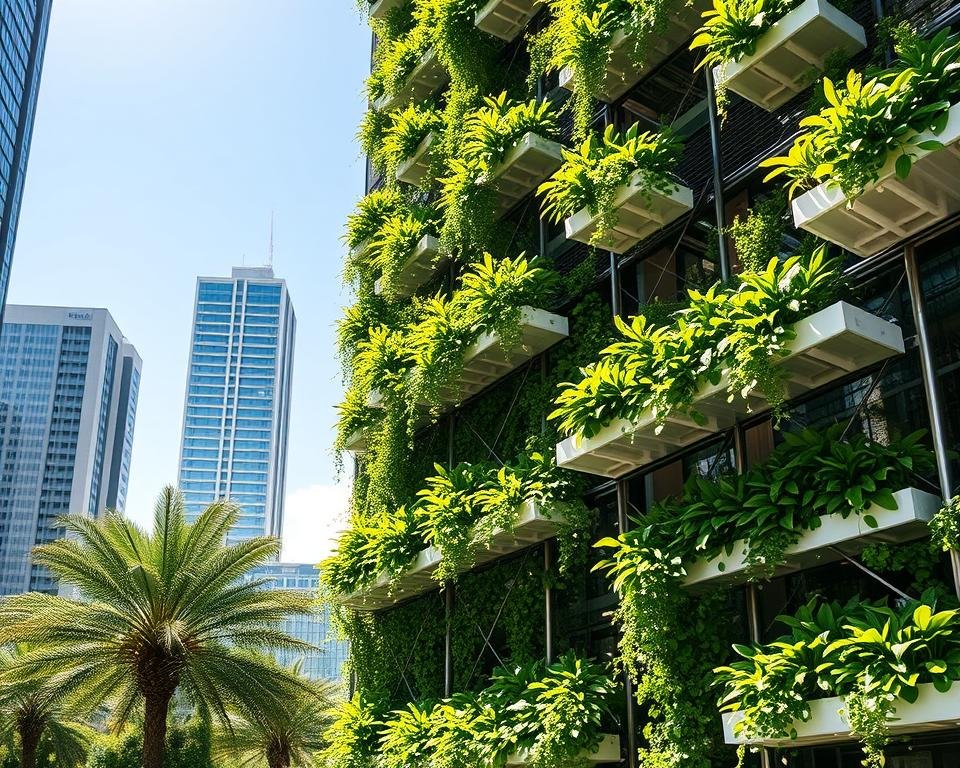
Creating a successful edible vertical garden needs careful planning. Start by choosing strong support systems. These must hold the weight of plants and soil.
When using new farming methods, focus on key parts:
- Wall strength and load-bearing capacity
- Irrigation system design
- Efficient drainage solutions
- Material selection for durability
Integrating vertical gardens into spaces is key. Think about these design points:
| Design Element | Considerations |
|---|---|
| Support Structure | Trellises, modular panels, wall-mounted systems |
| Weight Distribution | Reinforced mounting points, load-balanced design |
| Water Management | Integrated drainage, leak-proof connections |
Your vertical garden’s success relies on smart design. Good planning makes your edible wall look great and grow fresh food.
Design is not just what it looks like and feels like. Design is how it works. – Steve Jobs
Setting Up Your Vertical Garden System
Creating a vertical garden turns your space into a lively, productive area. DIY vertical gardening is a smart way to grow food in small spaces. It’s fun and rewarding, whether you’re new or experienced.
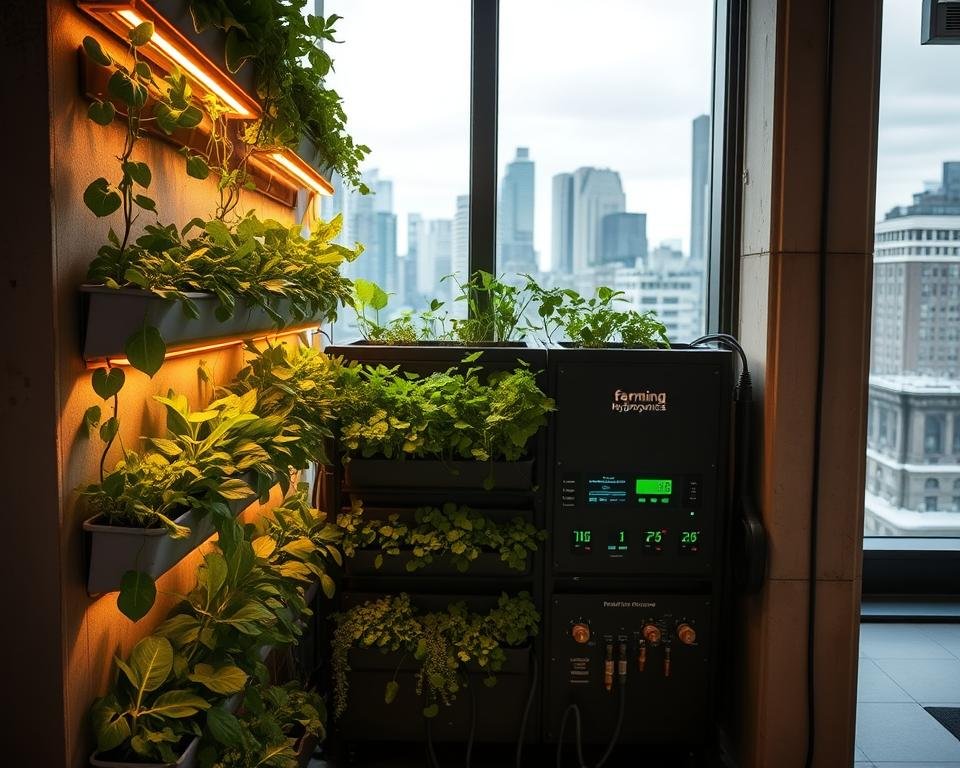
Before starting, prepare well. The right steps can make any wall or outdoor spot a lush garden.
Choosing the Perfect Location
Location is key for a successful vertical garden. Think about these important points:
- Look for areas with 6-8 hours of direct sunlight
- Make sure the wall can hold the weight
- Choose spots that are easy to get to for upkeep
- Keep it away from strong winds
Installation Process
Setting up your vertical garden needs basic tools and planning. Here’s how to do it:
- Get your tools ready: drill, level, tape measure
- Put up the mounting brackets securely
- Get your growing medium ready
- Make sure there’s good drainage
Initial Planting Tips
Start your farming journey with the right plants. Keep these tips in mind:
- Pick plants that fit well in vertical spaces
- Put plants at least 12 inches apart
- Use a mix of 2 parts potting soil to 1 part planting mix
- Go for herbs, trailing veggies, and small perennials
With good planning and effort, your vertical garden will be a beautiful and fruitful part of your home. Take on the challenge and enjoy the fresh produce!
Maintenance and Care Guidelines
Keeping your vertical garden in top shape is key to success in urban farming. Your edible wall needs regular care to grow healthy food. Make sure to water it often, as the soil dries out fast.
Check the soil’s moisture every day, more so in hot weather. Pruning and harvesting are also important. Remove dead leaves to stop diseases from spreading. Trim your plants to keep them bushy and prevent them from getting too long.
Looking after pests is crucial too. Check your plants weekly for bugs or diseases. Use natural pest control like neem oil or introduce beneficial insects. This way, your garden stays healthy and pest-free.
Don’t forget about fertilizing. Use a balanced fertilizer every two weeks when plants are growing. Since vertical gardens have less soil, regular feeding is necessary for strong growth. With the right care, your vertical garden will give you fresh, healthy food right at home.





